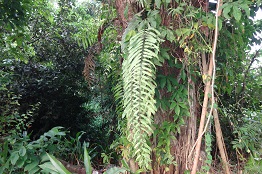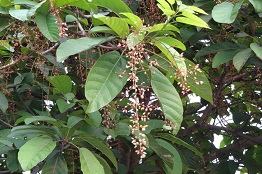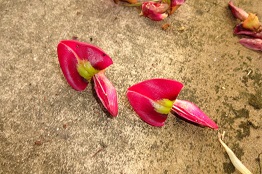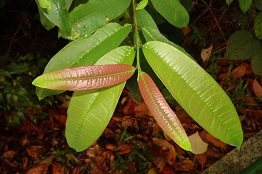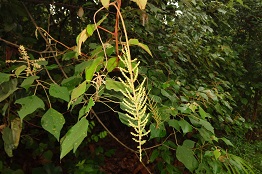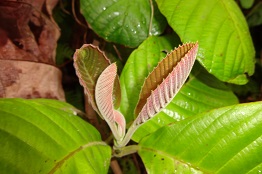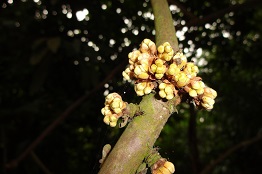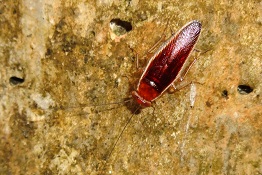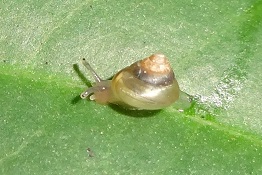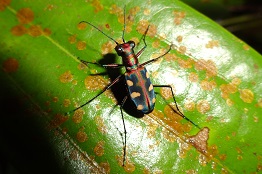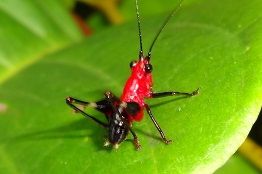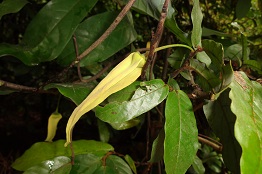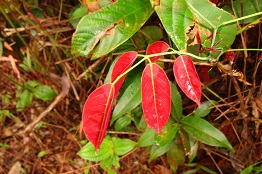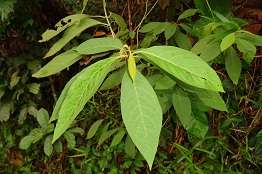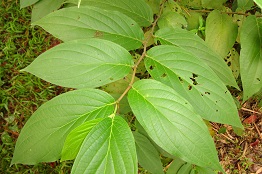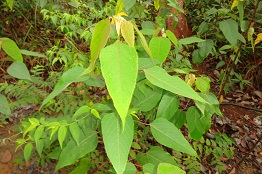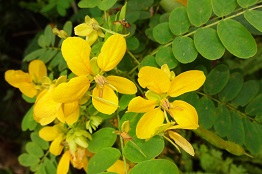Highlight:
After being grounded for almost 5 months, I finally got a chance to venture out to the wild again. My first trip out after this long
absence was to Sungei Buloh Wetland Reserve on 20 July last week. Though I did not find any new plant, I was still quite excited
since I had not being there for close to a year. Also, I had started to pay more attention to the little creatures which made each
trip more interesting when I could take pictures of some of these amazing creature that were often left unnoticed.
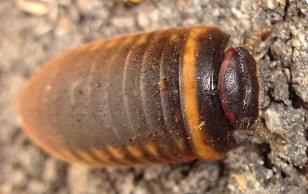

After the wetland trip, I decided to check out the Mandai area the week after. I was delighted to find a giant pill millipede crawling very slowly along a cycling track located by the side of the forested area. Although I managed to find a recent publication on millipedes in Singapore, this particular one was labelled as common giant pill millipede species without a scientific name (page 4). If it is "common", I am just wondering why the scientific name was not available. Later, I saw some pictures in the Tide Chaser blog that indicated it as an unidentified pill millipede.
Not too far away on the track was an assassin bug. Over time, I had accumulated pictures of 6 different types of this bug in my assassin bug archive.
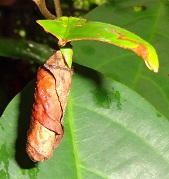
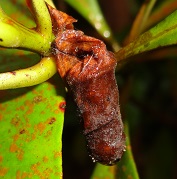
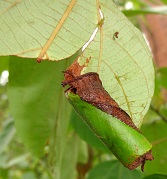 Since spotting my first Leaf Rolling Weevil in a park and learned
more about them, I started to look out for these leaf-cutting beetles and their work, the cut-and-roll-up leaf.
Since spotting my first Leaf Rolling Weevil in a park and learned
more about them, I started to look out for these leaf-cutting beetles and their work, the cut-and-roll-up leaf.
I did see one spiky Leaf Rolling Weevil in this area on 29 December 2012. This time round, I did not find any of this weevil but did see 3 of the roll-up leaves on 3 different plants. One was on an unknown shrub, another on a Calophyllum species and the last one on a Macaranga heynei (Blue Mahang). The weevil usually cut up young leaves rather than the mature ones.
The Common Yellow Stem Fig (Ficus fistulosa) is a very common fig tree in Singapore. I wrote a short note on the galls found on its leaves back in 2012. On this trip, I saw a young tree infected with galls and decided to take a closer look to find the very tiny bee-like flies which I deduced to be the causative agent of these galls. Indeed, there were a few of them. Actually, I am not sure whether it is supposed to be a bee or a fly.
The more exciting part was the thrips. I do know that thrips are found on the underside of the fig leaves. But, the number of thrips found on this tree was overwhelming; almost every leaf harboured swamps of them. On top of that, there were young thrips that were of light pink in colour and even presence of eggs. It might be the Cuban Laurel Thrips (Gynaikothrips ficorum). Besides the bee-like flies and the thrips, this fig tree is the hostplant of a moth caterpillar (Asota Plana).
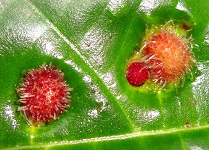
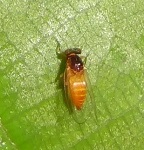
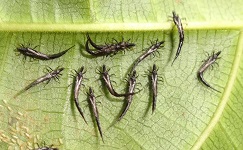
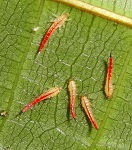
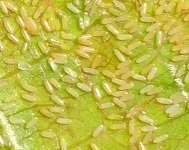
This trip was mostly about insect discovery. The last one that I will feature was this
red leaf beetle (Argopus brevis). There were many of them in an
area feeding on the leaves of the
Melastoma malabathricum (Straits Rhododendron).
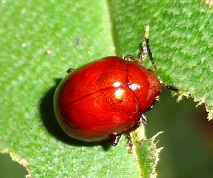
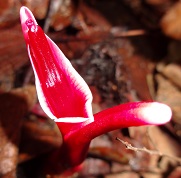
On the plant side, I did not have much to report. One of my favourite plant around the area is a ginger (Hornstedtia leonurus) with bright red flower that emerges from the soil around the plant. Each time I came by this area, I would do a check to see whether it was still doing well. It was no difference this time round.
This was a relatively short trip. The sky was full of rain cloud soon after I landed on my destination. Thunder started to sound within 2 hours. I had therefore decided to cut the trip short and return to the safety of my home.
Photo Gallery:
Below are selected photos from this trip arranged according to the sequence that they were taken. There is a text link under the photo that will direct you to more photos of the same species if they are available in my website.
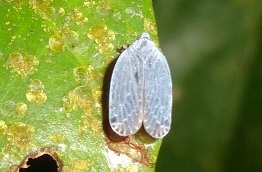
DSC04109
Cixiid Planthopper
(Family: Cixiidae)
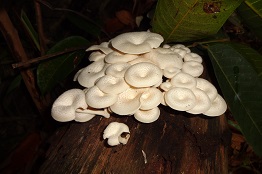
DSC04140
White Mushrooms
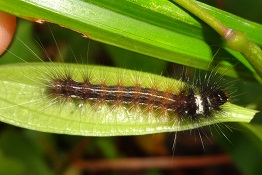
DSC04159
Unknown caterpillar
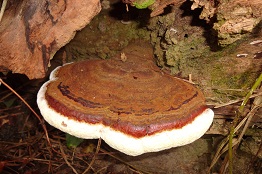
DSC04163
Mushroom
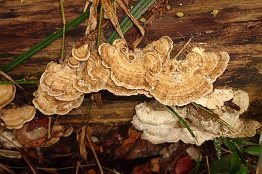
DSC04165
Mushroom
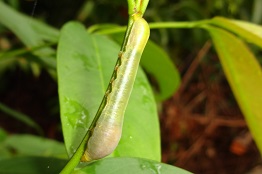
DSC04191
Unknown caterpillar
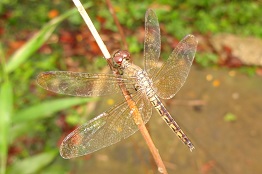
DSC04211
Neurothemis fluctuans
Common Parasol
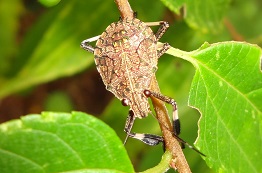
DSC04347
Nymph of bug
Statistics:
